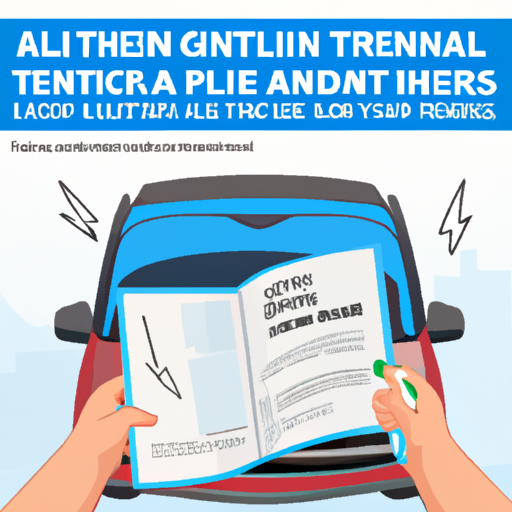Are you experiencing a leak in your Hyundai Elantra’s sunroof? In this article, you will learn some simple steps to help you fix the issue and prevent any further damage. With just a few tools and a little bit of time, you can have your sunroof leak-free and back to normal in no time.
To start, you will need to locate the source of the leak. One common area where leaks occur is around the sunroof’s rubber seal. Inspect the seal for any signs of wear or damage. If you spot any cracks or gaps, you can try cleaning the seal with a mild soap and water mixture, and then apply a silicone-based rubber sealant to fill in any gaps. Another potential cause of a sunroof leak could be clogged drain tubes. These tubes can become blocked with debris over time, causing water to overflow into the interior of your car. To fix this issue, you can use a small, flexible cleaning tool, such as a pipe cleaner, to gently clear any obstructions from the drain tubes.

Identify the Source of the Leak
Inspect the Sunroof Seal
The first step in fixing a leak in your Hyundai Elantra’s sunroof is to identify the source of the leak. Start by inspecting the sunroof seal for any signs of damage or wear. Look for cracks, tears, or gaps in the seal that could be allowing water to enter the sunroof. If you notice any issues with the seal, it may need to be replaced.
Check for Clogged Drain Tubes
Another common cause of sunroof leaks is clogged drain tubes. These tubes are designed to carry water away from the sunroof and channel it outside the vehicle. Over time, debris such as leaves, dirt, or mold can build up in these tubes, causing them to become clogged. To check for clogged drain tubes, locate the drain tube openings, which are typically located in the corners of the sunroof. Use compressed air or a wire to clear any blockages and ensure that water can flow freely through the tubes.
Examine the Windshield and Door Seals
In some cases, the source of the leak may not be the sunroof itself, but rather the windshield or door seals. Inspect these seals for any signs of damage or wear. Look for cracks, gaps, or loose sections that could be allowing water to enter the vehicle. If you notice any issues with the windshield or door seals, they may need to be repaired or replaced to prevent further leaks.
Cleaning and Clearing the Drain Tubes
Locate the Drain Tube Openings
Once you have identified that the sunroof’s drain tubes are the source of the leak, the next step is to locate the drain tube openings. These openings are typically located in the corners of the sunroof. Use a flashlight to help you locate them if necessary.
Use Compressed Air or a Wire to Clear Blockages
To clear any blockages in the drain tubes, you can use either compressed air or a wire. If you choose to use compressed air, insert the air nozzle into the drain tube opening and give a quick burst of air. This should dislodge any debris and clear the blockage. If you prefer to use a wire, gently insert the wire into the drain tube and move it back and forth to break up any clogs.
Clean the Sunroof Track
While you are working on cleaning the drain tubes, it is also a good idea to clean the sunroof track. Over time, dirt and debris can accumulate in the track, which can interfere with the proper movement of the sunroof. Use a soft cloth or brush to remove any dirt or debris from the track, making sure to pay attention to the corners and edges where buildup is most likely to occur.
Replacing the Sunroof Seal
Purchase a New Sunroof Seal
If you have determined that the sunroof seal is the source of the leak and it is damaged beyond repair, you will need to purchase a new sunroof seal. You can find these seals at auto parts stores or online. Make sure to purchase the correct seal for your specific Hyundai Elantra model and year.
Remove the Old Seal
To remove the old sunroof seal, gently pry it away from the sunroof frame using a flathead screwdriver or a plastic trim removal tool. Take your time and work slowly to avoid damaging the frame or any other components.
Install the New Seal
Once the old seal has been removed, clean the sunroof frame thoroughly to ensure proper adhesion of the new seal. Then, carefully align the new seal with the frame and press it into place. Use your hands to apply even pressure along the entire length of the seal to ensure a secure fit.
Repairing Damaged or Loose Seals
Identify the Damaged or Loose Seal
If you have found that the leak is caused by a damaged or loose seal other than the sunroof seal, the first step is to identify which seal is causing the issue. Check the windshield and door seals for any signs of damage or detachment.
Apply Adhesive to Reattach Loose Seals
If you have identified a loose seal, such as a windshield or door seal, you can try reattaching it with adhesive. Apply a small amount of adhesive to both the seal and the surface it attaches to, then press the seal firmly into place. Allow the adhesive to dry according to the manufacturer’s instructions before testing for leaks.
Replace Damaged Seals
If you have found any damaged seals that are beyond repair, they will need to be replaced. Contact your local Hyundai dealership or an auto parts store to purchase the correct replacement seals for your vehicle. Follow the manufacturer’s instructions for replacing the seals, making sure to clean the surfaces thoroughly before installing the new seals.

Check and Adjust the Sunroof Alignment
Inspect the Sunroof Alignment
Once you have addressed any seal issues and cleaned the drain tubes, it is important to inspect the sunroof alignment. Ensure that the sunroof is sitting flush with the roof of the vehicle and that there are no gaps or misalignments that could allow water to enter. If necessary, make the appropriate adjustments to realign the sunroof.
Sealing Cracks or Holes
Clean and Dry the Area Around the Crack or Hole
If you have identified any cracks or holes in the sunroof or its surrounding area, it is important to clean and dry the area thoroughly before attempting to seal it. Use a clean cloth or towel to remove any dirt, debris, or moisture.
Fill the Crack or Hole with an Appropriate Sealant
Once the area is clean and dry, fill the crack or hole with an appropriate sealant. There are many different types of sealants available, so choose one that is compatible with the material your sunroof is made of. Apply the sealant according to the manufacturer’s instructions, ensuring that the crack or hole is completely filled.
Smooth the Sealant and Let It Dry
After applying the sealant, use a clean cloth or your finger to smooth the surface of the sealant and remove any excess. Allow the sealant to dry completely before testing for leaks. Refer to the sealant’s instructions for the recommended drying time.
Waterproofing the Sunroof
Apply a Waterproofing Sealant to the Sunroof
To further ensure that your Hyundai Elantra’s sunroof remains leak-free, you can apply a waterproofing sealant to the sunroof itself. This will provide an extra layer of protection against water intrusion. Make sure to choose a sealant that is designed for use on automotive sunroofs and follow the manufacturer’s instructions for application.
Ensure Complete Coverage
When applying the waterproofing sealant, make sure to cover the entire sunroof surface, paying special attention to the edges where leaks are most likely to occur. It is important to create a watertight barrier that will prevent any water from entering the sunroof.
Allow the Sealant to Cure
After applying the waterproofing sealant, allow it to cure according to the manufacturer’s instructions before exposing the sunroof to any moisture. This will ensure that the sealant forms a strong and durable barrier against leaks.
Regular Maintenance to Prevent Leaks
Clean and Inspect the Sunroof Regularly
To prevent future leaks, it is important to perform regular maintenance on your Hyundai Elantra’s sunroof. Clean the sunroof regularly to remove any dirt, debris, or leaves that may have accumulated. Inspect the seal and surrounding areas for any signs of damage or wear and address any issues promptly.
Check the Drain Tubes for Any Blockages
In addition to cleaning the sunroof, it is crucial to regularly check the drain tubes for any blockages. Use compressed air or a wire to clear any debris that may have accumulated in the tubes to ensure that water can flow freely.
Replace Worn-Out Seals
Over time, the seals on your Hyundai Elantra’s sunroof may become worn out and lose their effectiveness. If you notice any signs of deterioration or damage, it is advisable to replace the seals to prevent leaks.
When to Seek Professional Help
If the Leak Persists After DIY Attempts
If you have followed all of the above steps and the leak in your Hyundai Elantra’s sunroof persists, it may be time to seek professional help. A certified Hyundai technician will have the expertise and equipment to properly diagnose the issue and provide a solution.
If There Are Extensive Damages
In some cases, the leak in your sunroof may be the result of extensive damages that require professional repair or replacement. If you notice significant damage to the sunroof frame, glass, or any other components, it is recommended to contact a professional for assistance.
If You Are Unsure About the Repair Process
If you are unsure about any aspect of the sunroof repair process or do not have the necessary tools or experience, it is always best to seek professional help. A trained technician will ensure that the repairs are done correctly and safely.
Conclusion
Fixing a leak in a Hyundai Elantra’s sunroof may seem like a daunting task, but with the right knowledge and tools, it can be manageable. By identifying the source of the leak, cleaning and clearing drain tubes, replacing damaged or loose seals, and ensuring proper alignment and waterproofing, you can effectively fix the leak and prevent future issues. Regular maintenance, such as cleaning and inspecting the sunroof, checking the drain tubes, and replacing worn-out seals, can also help prevent leaks. If DIY attempts fail or there are extensive damages, it is advisable to seek professional help. Remember, a dry and leak-free sunroof will ensure a comfortable and enjoyable driving experience in your Hyundai Elantra.
